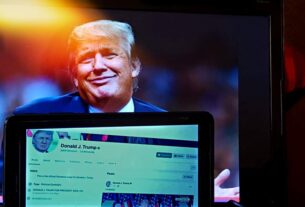Wed 17 Apr 2019:
LONDON — When Samsung said this year it would launch a smartphone with a folding screen, the big question was whether the innovation was something people actually wanted or needed.
Is the Galaxy Fold a gimmick to help sell more smartphones in a slowing market or a true breakthrough that will change how we use our devices?
Major manufacturers have in recent years been largely updating smartphones with marginal improvements like better cameras and face scanning technology, so skepticism has been high.
The South Korean electronics company this week offered the media a hands-on preview ahead of the release in the U.S. this month, and the first impression is that a folding screen in some circumstances might be a useful innovation — but at a cost of almost $2,000 it won’t be a mass market product anytime soon.

WHY A FOLDABLE SCREEN?
As people increasingly use their phones to do data-hungry tasks like view photos on Instagram and watch movies or TV shows on YouTube or Netflix, Samsung says the case for a folding phone has become clear: People want bigger screens but they also want a phone they can carry around in their pocket.
Skeptics might say that folding phones are a sign that the smartphone industry has run out of good ideas and fallen into an innovation malaise. Samsung isn’t alone. Little known Royole started selling its FlexPai in China last year while Chinese tech giant Huawei announced its own folding phone, the Mate X, days after Samsung’s announcement.
OPEN AND SHUT
Closed, the Galaxy Fold is about 6.3 centimeters wide and 16 centimeters long (2.5 by 6.3 inches). It felt like holding a TV remote control, but heavier. The phone’s two panels are held shut by magnets, so a bit of force is needed to get it open. With a little practice I was able to do it one-handed by jamming my thumb between the two sections to pop them apart.
Samsung spent nearly five years working on the hinge, which went through more than 1,000 prototypes. It uses cogs and gears to give it a smooth feel and has two open positions. First, it unfolds to 140 degrees — handy if you want to put it down on your desk but still need to angle part of the screen for a video call, for example. Bend it further and the screen silently and solidly opens to a flat position. To close the phone, you click it out of the open position and snap the sides shut.
SCREEN TIME
Fully open, there’s plenty of real estate on the Galaxy Fold’s main screen, which measures 7.3 inches (18.5 centimeters) diagonally. It’s great if you want to take and review photos, watch videos or read e-books without squinting. Multi-tasking is also possible with up to three apps open at the same time. Wide open, the Fold felt more like a small tablet than a smartphone, which suggests that one possible market is people who want both kinds of devices but don’t want to buy two.
As with anything that folds, there’s a crease. It runs down the center of the screen and is visible at certain angles, though I didn’t really notice it when using the apps. Samsung developed a new adhesive to glue the composite polymer screen together, and promises it can withstand being opened and closed 200,000 times, or 100 times a day for five years.
The Fold has a second screen, a long, narrow display, on one of its outer panels, so you can continue using apps while it’s closed. I tried out a few — YouTube and car racing game “Asphalt” — that transitioned seamlessly between both screens. It could, for example, be useful to consult Google Maps in detail on the big screen before setting off, then put it in your pocket and quickly check the directions en route. But I’m still not convinced that “app continuity” is something I need.
The phone’s specs have been available to app makers for a while and the company says most should only need a few tweaks to run properly on its Android operating system. Hundreds of apps have already been “optimized” for the Fold but Samsung won’t say how many until it’s released.
___
CAMERAS AND MORE
The Galaxy Fold has no less than six cameras. Three lenses on the rear, another on the cover next to the second screen, and two more inside, including a selfie camera. There’s a fingerprint scanner on the right side, which can be used when it’s both open and closed. Inside, the battery is split in two, one in each panel, and it has enough juice to wirelessly charge another device, such as the wireless earphones included. It’s not clear if the bigger screen needs more power — Samsung hasn’t given any battery life estimates, saying only that it may vary.
___
WHEN
The Galaxy Fold is set for release in the U.S. on April 26, priced at $1,980. It goes on sale in some Europe markets on May 3.
Think your friends would be interested? Share this story!





